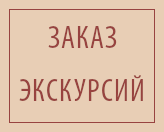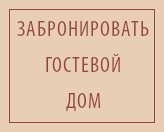There are many sites and settlements of ancient (neolithic) people found on the territory of the Reserve and adjusted ones. In XVII – early XX century South-Eastern Murom woods were owned by cloisters, State and individual persons. In the Eastern part of the Reserve still can be found a special spot named “Golden Pylon”, which marked borders of three provinces. Former owners tried not only to keep, but even to enlarge the woods productivity which is evident from the numeral drainage canals found in swampy and watery areas. The corduroy roads were built on such areas, which still can be sometimes found. The biggest lake – Inorskoe – were connected to rivers Moksha and Pushta by man-made canals. In frosty weather they were fishing in the canal stations. One of the monastic cells, called after the river “Arga”, functioned till recently.
First piecemeal information on flora of the territory, which now belongs to Mordovia State Natural Reserve, can be found in studies of D.Litvinov who explored, along with the others, Temnikovsky appanage of Tambov province. Special fauna study of newly found Reserve belong to professor N. Kuznetsov from Moskow in 1936–1939. Unfortunately the materials were published only after his death and being edited without him contain some sorry mistakes and inaccuracies in the list of flora species. In 1942–1943 T. Nikolaeva, research worker of Cryptogamous department of The Komarov Botanical Institute of the Russian Academy of Sciences studied Reserve flora. V. Chastukhin studied fungal species. Studies of A. Shcherbakova contain information about the flora of grasslands. O. Tsinger, who worked at the Reserve later added and edited flora lists. In 1980 T. Silaeva sent floristic samples to the Syreyshchikov Herbarium, collected for her dissertation “Flora of the Moksha river basin”. In 1980-1985 botanists from Lomonosov Moscow State University under the direction of V. Tikhomirov and V. Novicov occasionally worked here. Workers of the Reserve are making systematic research of vegetation nowadays and fix the results in “Nature Chronicle”. Flora study published by Reserve workers N. Borodina, I. Tereshkin, L. Dolmatova, L. Tereshkina contains aggregate data concerning area of distribution, ecological niche and rarity degree of 736 vascular plant species. Later were published numerous additions to flora study.
Since 1980s state of the rare flora species populations are being watched in permanent quadrates in regular and stationary manner, the results are added to rare species section of Nature Chronicle. Workers of the Reserve retraced changes in magnitude of many rare flora species cenopopulations dealt with ecological succession processes (Glyceria lithuanica (Gorski) Gorski), Carex bohemica Schreb., C. disperma Dew., C. irrigua (Wahlenb.) Smith ex Hoppe, C. limosa L., Cypripedium calceolus L., Corallorhiza trifida Chatel., Listera cordata (L.) R. Br., Goodyera repens (L.) R. Br., Lunaria rediviva L., Trapa natans L., Moneses uniflora (L.) А. Gray). It is discovered that boreal flora species environmentally confined with streamside spruce forest with wide range of environmental conditions. Rare species are the most sensitive ecosystem component. They are first to react on environmental factors changes and drop out of the communities due to endogenous and ecogenetic processes. Thus they can extinct from the Reserve territories without any man impact (from Nature Chronicles of 1985–1992). There are many other studies dealt with plants and their communities protection. There are researches of pine forests growth dynamics. Artistic description of Reserve nature can be found in popular works of I.Tereshkin. Many precious materials which were collected by Reserve botanists over the years unfortunately are still unpublished. I. Kiriukhin studied rare vascular plants while dissertation research and collected Herbarium which is now stored at Ogarev Botany and Physiology of Plants Department of Moscow State University.
Apparently, the first information about the fauna of the reserve, related to the Temnikovsky appanage of Tambov province that time, dates back to the names of such scientists as A.S. Reztsov and S.A. Predtechensky. The first one plied in the county in summer of 1897 to study mainly birds. The other one studied and collected different groups of vertebrates in different years beginning XX century. However, he has repeatedly been to the Tambov district. Before the Reserve foundation in 1927, Professor G.S. Sudeikin carefully inspected forest of two forestries, which later became a part of Protected Area. He noted the strong clutter of woods due to a huge number of windbreak, littering of logging sites after clear-cutting and lack of residues cleaning from harvesting of wood for aviation. The first systematic and detailed expedition under Professor S.I. Ognev came to the conclusion that Reserve fauna study may reveal new separate species. Expedition under the direction of Professor S. Turov (mammalogist L. Morozova, Turov, VV Redikortsev entomologist, ichthyologist FF Tsentilovich, ornithologist E. Ptushenko) more fully investigated fauna in 1936. In 1939, there worked Hydrobiological Expedition of Voronezh Veterinary Institute Zoology Department, under the direction of V.I. Shirokova.
During the Great Patriotic War in reserve harvesting of local rubber trees - euonymus took place. At the same time, a special laboratory started the search of mushrooms containing penicillin. First post-war expedition to the reserve was a group of soil scientists of Moscow University who worked in 1945-1947 led by Professor Remezov. Only in the late 1940's own staff of scientists is formed (ID Shcherbakov, YF Shtarev, from 1958 - M. and A. Borodin Borodin).
Entomological research in the mid - late 1940s was carried by N.V. Bondarenko, N. Bubnov, S.M. Nesmerchuk. Subsequently they were published in the posthumous work of NN Plavil'shchikov and NV Bondarenko. In later years employee of MSU Zoological Museum E.M. Antonova was engaged in the study of geometrid moths of MSNR, Nizhny Novgorod University Professor G.A. Anufriev studied cycads. In July, 1962, and in 1965 members of Moscow State Forest Univercity Forest Protection Department examined dendrophilous insect fauna to determine pests of forest communities. In 1969 they studied various aspects of the pine beetles biology. In the 1970's - early 1980's there worked a team on the study of ground beetles under the supervision of Mordovia State Natural Reserve worker V.F. Feoktistov. In the late 1990's hydrobiological survey of the river Pushta was made by A.G. Kamenev, and Yu.A. Kuznetsov. Part of the materials, stored in the Reserve Museum, was treated by A.B. Ruchin and colleagues. These studies have greatly expanded the Reserve list of insect fauna.
In the 1950's - 1960's summaries of the fur-bearing animals helminths information are made. In the 1960-1970's employees of All-Union Helminthology Institute worked in the Reserve, and parasitologists of Mordovia State University after that.
In 1965-1966 were made ichthyological studies which identified 15 species of fish found in the Reserve lakes. At the same time known ichthyologist M.V. Mina held scale structure analysis as a method of links between populations research. Further ichthyological studies occurred while "Nature Chronicles" publishing and were summarized by S. Potapov and colleagues. Some information on the fish fauna of r. Satis was collected by V.A. Kuznetsov.
Fauna of terrestrial vertebrates was studied particularly fruitful in the reserve. Herpetological research after E.S. Ptushenko were continued by S.P. Kasatkin, V.I. Astradamov, A.B. Ruchin and M.K. Ryzhov and known Togliatti herpetologist AG Bakiyev. Some information on the age structure of the common toad, dwelling on the reserve territory, can be found in the work of an employee of the Ecology and Evolution Institute E.M. Smirina. The study bird fauna of the Reserve is associated with such ornithologists as I.D. Shcherbakov, M.A. Ledyaykina, L.I. Bryzgalina, G.F. Grishutkin, A. Lapshin, S. Spiridonov.
At the Reserve foundation moment there was infused a completely exterminated before that time European beaver. Here it successfully procreated and became spread over the neighboring territories. Beyond that beavers from the Reserve population were taken for recolonization of Mordovia and other regions. Thus beavers were constantly monitored to do a special study of its biology and ecology. These studies were mostly led by M.N. Borodina. In the 1960-1970's data on the fauna of mammals, as well as ecology of individual species was summarized and added. Teriofauna research at present are continued by KE Bugaev and SK Potapov.










.jpg)













